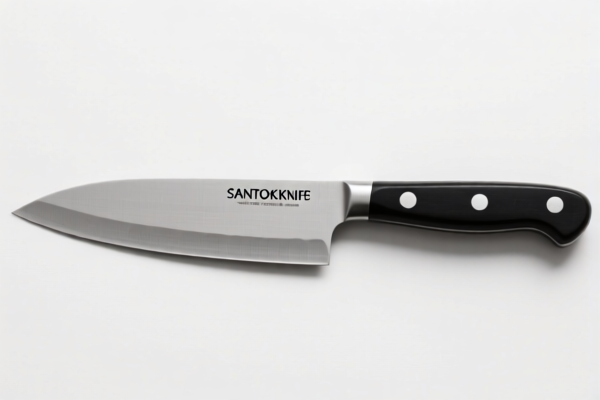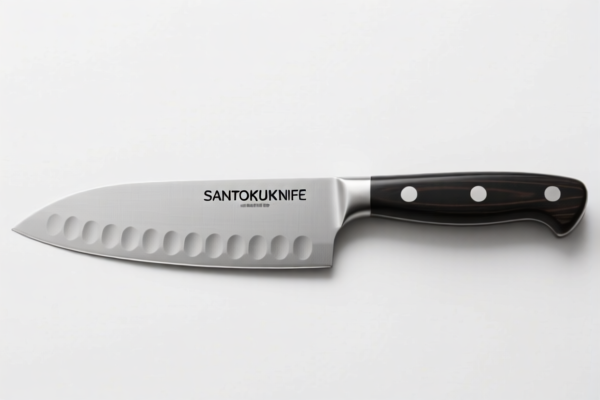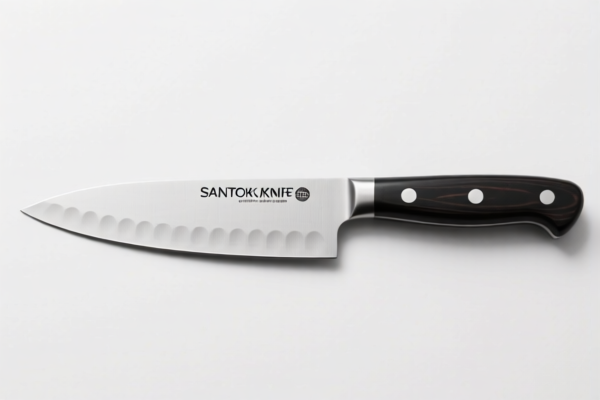| HS Code | Official Doc | Tariff Rate | Origin | Destination | Effective Date |
|---|---|---|---|---|---|
| 8211929030 | Doc | 0.4¢ each + 6.1%+37.5% | CN | US | 2025-05-12 |
| 8211922000 | Doc | 0.8¢ each + 4.6%+37.5% | CN | US | 2025-05-12 |
| 8208300060 | Doc | 55.0% | CN | US | 2025-05-12 |
| 8208300030 | Doc | 55.0% | CN | US | 2025-05-12 |
| 8214903000 | Doc | 1¢ each + 4.9%+37.5% | CN | US | 2025-05-12 |
| 8214906000 | Doc | 0.2¢ each + 3.1%+30.0% | CN | US | 2025-05-12 |
| 9605000000 | Doc | 38.1% | CN | US | 2025-05-12 |




Santoku Knife
The Santoku knife (三徳包丁, santoku bōchō) is a general-purpose kitchen knife originating from Japan. Its name translates to "three virtues" – referring to its suitability for slicing, dicing, and mincing. While variations exist, it is typically shorter and wider than a traditional European chef's knife.
Material
Santoku knives are commonly made from a variety of steels, influencing price and performance:
- High-Carbon Stainless Steel: Offers a good balance of sharpness, durability, and resistance to rust. Popular choices include AUS-8, VG-10, and 440C.
- Carbon Steel: Known for exceptional sharpness and ease of sharpening, but requires diligent care to prevent rust and discoloration. Often favored by professional chefs. Examples include White Steel (Shirogami) and Blue Steel (Aogami).
- Damascus Steel: Refers to the patterned appearance created by folding different types of steel together. Often visually appealing, and can combine the benefits of multiple steels.
- Ceramic: Lightweight, extremely sharp, and resistant to rust, but brittle and prone to chipping.
Purpose & Function
The Santoku knife is designed as a versatile all-purpose blade, excelling in a wide range of kitchen tasks:
- Slicing: Its straight edge and sheep's foot blade shape make it ideal for slicing meats, vegetables, and fruits.
- Dicing & Mincing: The wide blade allows for efficient rocking motion when dicing and mincing ingredients.
- Chopping: Suitable for chopping herbs, nuts, and other smaller items.
Usage Scenarios
- Everyday Kitchen Tasks: The primary use case is for daily food preparation.
- Vegetable Preparation: Particularly well-suited for slicing and dicing vegetables due to its shape and balance.
- Meat & Fish Preparation: Capable of handling boneless meats and fish fillets with precision.
- Professional Kitchens: Frequently used by chefs due to its versatility and efficiency.
Common Types & Characteristics
- Traditional Santoku: Features a straight edge, sheep's foot blade, and a handle typically made of wood or synthetic materials. Blade length is generally between 165-210mm (6.5-8.3 inches).
- Grantons (Kurogami): Hollow indentations along the blade's sides, designed to prevent food from sticking.
- Full Tang vs. Partial Tang: Refers to whether the steel extends the full length of the handle (full tang) or only partially (partial tang). Full tang knives are generally more durable.
- Handle Materials: Wood (Pakkawood, Rosewood), Synthetic Materials (G-10, Micarta), and Resin.
- Blade Shape Variations: While the standard shape is a sheep’s foot, some variations feature a more curved blade.
Care and Maintenance
- Sharpening: Regular sharpening is essential to maintain the knife's edge. Whetstones are commonly used.
- Cleaning: Hand washing is recommended to preserve the blade's quality and handle material.
- Storage: Store in a knife block, on a magnetic strip, or with a blade guard to protect the edge and prevent accidents.
- Rust Prevention (Carbon Steel): Carbon steel knives require immediate drying after use and occasional oiling to prevent rust.
Commodity Classification and HS Code Analysis for SANTOKUKNIFE
Based on the provided information, SANTOKUKNIFE can be classified under several HS codes, depending on its specific characteristics. Here's a detailed breakdown:
-
8211.92.90.30: This HS code covers knives with cutting blades, serrated or not (including pruning knives), other than knives of heading 8208, and blades and other base metal parts thereof: Other: Other knives having fixed blades: Kitchen and butcher knives. This is a likely candidate if the Santoku knife is a standard kitchen knife with a fixed blade.
- 82: Chapter 82 – Articles of cutlery, forks, spoons, knives, surgical instruments and razors.
- 11: Heading 82.11 – Knives with cutting blades, serrated or not (including pruning knives), other than knives of heading 8208, and blades and other base metal parts thereof.
- 92: Subheading 82.11.92 – Other.
- 90: Further breakdown specifying "Other knives having fixed blades: Kitchen and butcher knives".
- Tax Details: Base duty of 0.4¢ each + 6.1%, with an additional 7.5% duty. After April 2, 2025, an additional 30.0% duty will apply, resulting in a total tax rate of 0.4¢ each + 6.1% + 37.5%.
-
8211.92.20.00: This HS code covers knives with cutting blades, serrated or not (including pruning knives), other than knives of heading 8208, and blades and other base metal parts thereof: Other: Other knives having fixed blades: With rubber or plastic handles: Kitchen and butcher knives. If the Santoku knife has a rubber or plastic handle, this code is applicable.
- 82: Chapter 82 – Articles of cutlery, forks, spoons, knives, surgical instruments and razors.
- 11: Heading 82.11 – Knives with cutting blades, serrated or not (including pruning knives), other than knives of heading 8208, and blades and other base metal parts thereof.
- 92: Subheading 82.11.92 – Other.
- 20: Further breakdown specifying "Other knives having fixed blades: With rubber or plastic handles".
- Tax Details: Base duty of 0.8¢ each + 4.6%, with an additional 7.5% duty. After April 2, 2025, an additional 30.0% duty will apply, resulting in a total tax rate of 0.8¢ each + 4.6% + 37.5%.
-
8214.90.30.00: This HS code covers Other articles of cutlery (for example, hair clippers, butchers' or kitchen cleavers, chopping or mincing knives, paper knives); manicure or pedicure sets and instruments (including nail files); base metal parts thereof: Other: Cleavers and the like not elsewhere specified or included: Cleavers with their handles. If the Santoku knife is classified as a cleaver, this code may be applicable.
- 82: Chapter 82 – Articles of cutlery, forks, spoons, knives, surgical instruments and razors.
- 14: Heading 82.14 – Other articles of cutlery.
- 90: Subheading 82.14.90 – Other.
- 30: Further breakdown specifying "Cleavers and the like not elsewhere specified or included: Cleavers with their handles".
- Tax Details: Base duty of 1¢ each + 4.9%, with an additional 7.5% duty. After April 2, 2025, an additional 30.0% duty will apply, resulting in a total tax rate of 1¢ each + 4.9% + 37.5%.
-
8214.90.60.00: This HS code covers Other articles of cutlery (for example, hair clippers, butchers' or kitchen cleavers, chopping or mincing knives, paper knives); manicure or pedicure sets and instruments (including nail files); base metal parts thereof: Other: Cleavers and the like not elsewhere specified or included: Other. If the Santoku knife is classified as a cleaver but doesn't fit the description of "Cleavers with their handles", this code may be applicable.
- 82: Chapter 82 – Articles of cutlery, forks, spoons, knives, surgical instruments and razors.
- 14: Heading 82.14 – Other articles of cutlery.
- 90: Subheading 82.14.90 – Other.
- 60: Further breakdown specifying "Cleavers and the like not elsewhere specified or included: Other".
- Tax Details: Base duty of 0.2¢ each + 3.1%, with an additional 30.0% duty.
Important Note: The correct HS code will depend on the specific characteristics of the SANTOKUKNIFE, particularly the handle material and whether it is classified as a standard kitchen knife or a cleaver.
Customer Reviews
No reviews yet.